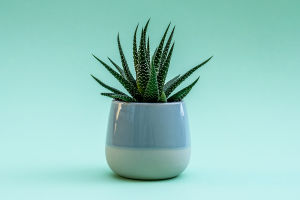If you are usually very busy and can't spend too much time cooking, then juicing vegetables is a good choice.
Some nutritionists generally do not recommend using fruit juice, but vegetable juice and fruit juice are not exactly the same. There are three reasons:
(1) The juicing process destroys the plant cell walls, which greatly increases the free sugars in the fruit juice, thereby increasing the blood sugar response. However, the sugar content of vegetables is much less than that of fruits, so juicing vegetables is not a problem.
(2) Juicing can easily lead to people accidentally ingesting too much. Drinking a glass of strong apple juice may be equivalent to eating two or three apples directly, and the fiber may be destroyed but the sugar is completely consumed by you, which will increase the burden of metabolism.
However, some people's appeal to eat at home is to eat more vegetables on the premise of saving time. Juicing and drinking are much more convenient than cooking cooked food.
(3) Eating fruit directly will not burden your digestion. Juicing is rather troublesome. Vegetables often have thick stems and long leaves that need to be chopped up and contain oxalic acid, which is easier to digest when cooked and requires further processing. Juicing is the less troublesome way.
Recommended vegetable juice pairings:
Ginger + Green Vegetables + Celery + Apple
●Effect: First, wash some ginger, celery, and apples and squeeze them into pieces, then put them into the juicer together with the greens to make juice.
tomato + carrot
●Effect: Super antioxidant foods, tomatoes, and carrots are on the list. First, squeeze the carrots, then add the tomatoes and mix quickly. The tomatoes increase the taste and neutralize the umami of the carrots.
Bell Pepper + Pineapple
●Effect: Yellow bell pepper, pineapple, turmeric powder 5g
It can help digestion, reduce GI value, help body fat burn, and promote metabolism.
Tips for juicing vegetables:
1. For people with bad stomachs, such as the elderly and children, juicing vegetables will also be better for digestion, but you must remember to blanch the vegetables in advance to remove water-soluble oxalic acid.
2. If it is a vegetable with a lot of oxalic acids (such as spinach, and amaranth), it is also recommended to add some milk when stirring, so that the calcium in the milk can be combined with the oxalic acid in the vegetable.
3. Adhere to the "3 ratios"
If you want to drink healthy vegetable juice, the most perfect ratio is 1:1:1, a cup of nutrient-rich vegetable juice should include vegetables, fruits, and nuts.
When making vegetable juice, the number of servings can be calculated as a ratio:
1 serving of vegetables = 1 bowl of vegetables
1 serving of fruit = 3/4 bowl
1 serving of nuts = 1 level spoon
4. Vegetables are best cooked first
Vegetables may have residues of pesticides and insect eggs, so it is recommended to wash and scald them before making vegetable juice.
5. Do not cut vegetables before washing
The nutritionist reminds us that when making vegetable juice, vegetables should not be cut first and then washed, otherwise nutrients will easily be lost from the cut position.


